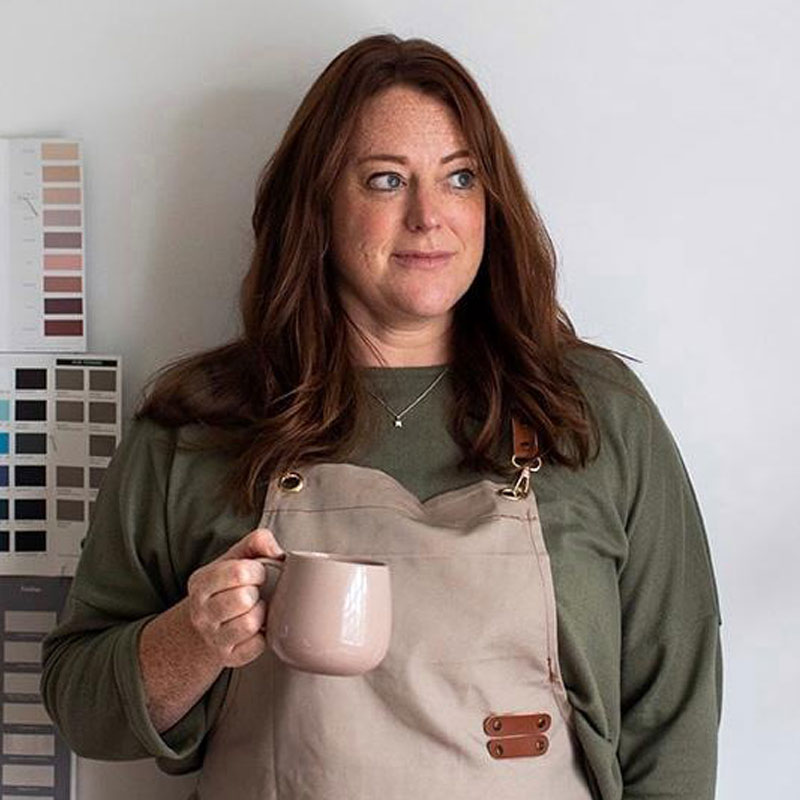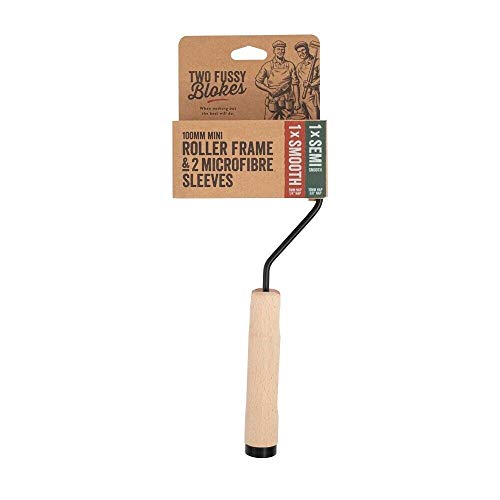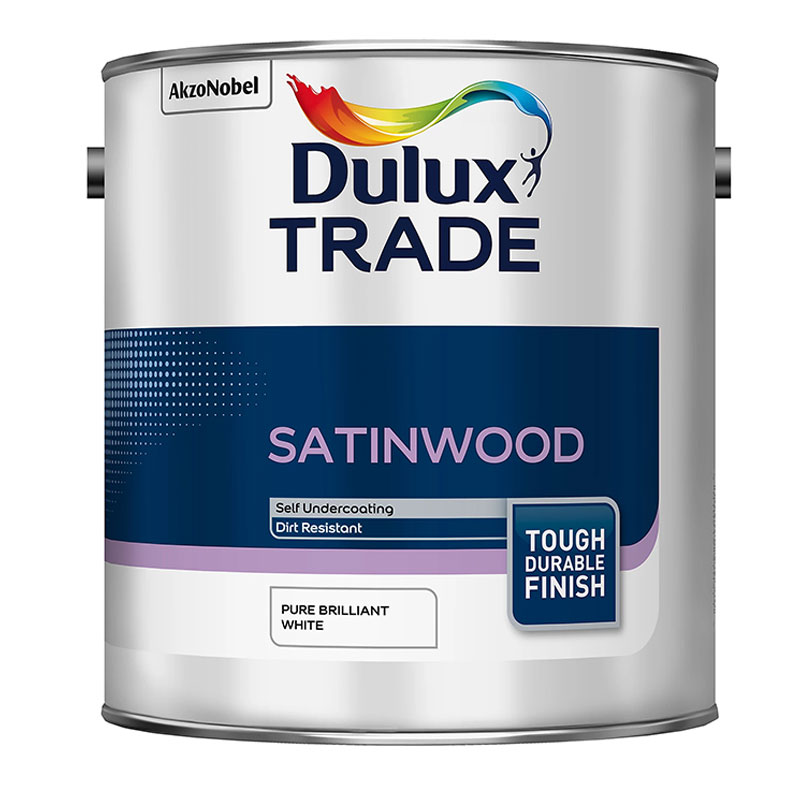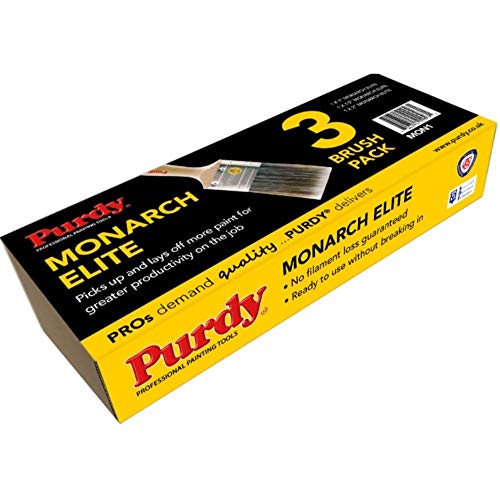When it comes to eggshell vs satin paint, which one should you use? We help you decide what’s best
Discover the subtle differences between eggshell and satin paint to make sure you make the right choice

Choosing a colour is the first step on a paint project; the second is selecting the finish you want. You need to decide what will work well on the surface you are working on. Are you looking for a subtle sheen, or do you want something more exuberant? Do you want a finish that is easy to clean? Do you want a finish that can withstand the odd knock or two?
Whether you're painting a wall or woodwork, you need to think about how the chosen finish will look aesthetically, but also how it will work on a practical level.

Michael Rolland is a painting expert and Managing Director of The Paint Shed. Michael has years of experience within the painting industry, using this expertise to influence his own DIY projects using the best possible tools and materials.
Key differences between eggshell and satin
The key difference between eggshell and satin lies in the level of sheen that they offer. Michael Rolland, paint expert and managing director of The Paint Shed, explains, “Satin has a noticeable smooth sheen, making it more reflective and suitable for high-use areas like kitchens and bathrooms, where regular cleaning is needed.”
He adds, “Eggshell paint has a lower sheen, offering a softer, more muted look that mimics that of an egg. This paint hides surface flaws well but isn’t as moisture-resistant or easy to wipe down as satin.”
To get the best from satin or eggshell paint, Ashley Aspin, interior decorator and colour consultant, says, "Every paint brand has its own system – and for the best results, it’s always worth sticking to it. That means using the recommended primer, undercoat and topcoat designed to work together, especially if you want a durable, long-lasting finish."
Aspin adds one more point, "One brand’s 'eggshell' might not match another’s. Sheen levels aren’t standardised, so it’s always worth checking the actual gloss percentage if you’re trying to compare finishes across different manufacturers."

Ashley Aspin is an interior decorator and colour consultant creating considered, characterful interiors with personality and purpose at their core. Based in Cheshire, she is a member of the Guild of Master Craftsmen, and works with homeowners and independent businesses.
Try these to apply satin and eggshell paint

Pav Wasik has 17+ years of experience in luxury decorating, specialising in refurbishments, panelling, wallpapering, and colour consultancy - renowned for quality craftsmanship and customer satisfaction.
Which is more durable, eggshell or satin?
Pav Wasik, Founder of Uptown Interiors, says, “In practical terms, there isn’t a big difference in durability between eggshell and satin if the correct primer and preparation are used.” He adds, “Both finishes hold up well, and if oil-based paint is chosen, durability increases further, but not in any huge way.”
Typically, satin paint has a slightly higher sheen level than eggshell, which means it is less likely to scuff or mark than eggshell, and it is easier to clean when it does get marked.
Bring your dream home to life with expert advice, how to guides and design inspiration. Sign up for our newsletter and get two free tickets to a Homebuilding & Renovating Show near you.
This makes it a better choice, especially for woodwork such as painting skirting boards, than eggshell for high-traffic areas like hallways and living rooms. Eggshell is better suited for areas that don’t get so much traffic, such as ceilings, bedrooms and less-used areas of a kitchen.
But, it's also a good alternative to flat paint in high traffic areas because it's more durable and easier to clean than flat or matt paint.

Which paint is easier to clean?
The mildly glossier finish of satin makes it slightly easier to clean and maintain than eggshell, but in reality there isn't a great deal of difference. Satin is easier to wipe clean while eggshell typically needs a little more effect to clean.
Ideally use a cloth and warm soapy water to wipe clean both. But eggshell’s slightly rougher surface means it will typically take longer to get it clean. If you have a stubborn stain use well diluted sugar soap, but be gentle.
Which paint is easier to apply?
When it comes to application there isn’t a great deal of difference between how to paint a room with eggshell and satin. They have very similar viscosity, but this can vary from brand to brand.
Typically eggshell is more forgiving when applying and doesn’t need quite so much painting experience to get a decent finish – ideal for novice DIYers especially when painting woodwork.
Which paint looks better?
There isn’t a great deal of difference in the sheen between eggshell and satin, but as always, when choosing a finish for your paint project, it’s a matter of personal choice.
If you want a very low sheen with a soft touch finish that isn’t quite matt, then eggshell is the one for you. If you want something with a little more lustr,e then satin is the better choice. But consider how it fits in with the style of your home.
Eggshell is great in period homes and works well on woodwork and walls, while satin is typically suited to a more modern home.
Where to use eggshell and satin
“Both finishes are often used for woodwork, especially when paired for different effects,” shares Wasik, “Satin is sometimes chosen for bathrooms and kitchens because it is easier to clean” Rolland adds, “Satin is also used for its subtle sheen, which helps reflect light, making it a good choice for smaller spaces.”
Wasik says, “Eggshell is often preferred for covings or areas where a softer, less reflective finish is desired.” Rolland adds, “Eggshell, with its lower sheen, is better suited to living rooms, dining rooms, and other areas with less wear. It hides surface imperfections well but isn’t recommended for woodwork or areas that require frequent wiping.”
Whether you choose eggshell or satin paint, you need to make sure that you are doing your prep correctly and painting properly. Check out our guides on sanding walls, painting wood, and how to paint a panel door.
Steve Jenkins is a freelance content creator with over two decades of experience working in digital and print and was previously the DIY content editor for Homebuilding & Renovating.
He is a keen DIYer with over 20 years of experience in transforming and renovating the many homes he has lived in. He specialises in painting and decorating, but has a wide range of skills gleaned from working in the building trade for around 10 years and spending time at night school learning how to plaster and plumb.
He has fitted kitchens, tiled bathrooms and kitchens, laid many floors, built partition walls, plastered walls, plumbed in bathrooms, worked on loft conversions and much more. And when he's not sure how to tackle a DIY project he has a wide network of friends – including plumbers, gas engineers, tilers, carpenters, painters and decorators, electricians and builders – in the trade to call upon.




